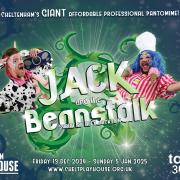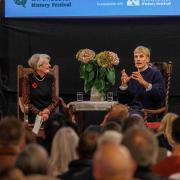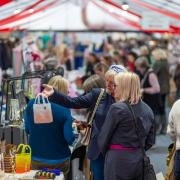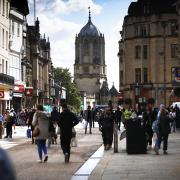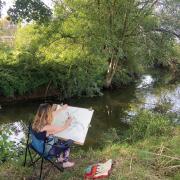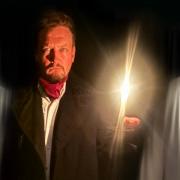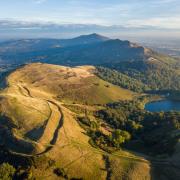Cirencester is on the verge of a new historical dawn. Step inside its Corinium Museum and one can’t help but notice some of the most attractive masterpieces to have survived from the Roman era – mosaics. In Britain there are around 800 examples and in the Roman town of Corinium, more than 90 mosaic pavements have been discovered. In fact, as we walk-through modern-day Cirencester, we are probably only centimetres away from ‘tesserae,’ the official name for a piece of mosaic. Just as every mosaic piece has an allocated place in the final picture, this mosaic metaphor is true for an important and exciting new venture happening in Cirencester.
Like careful archaeologists carrying out work on an important dig, much preparation has gone on behind the scenes to uncover the latest treasure, which should attract curious people from Gloucestershire and surrounding counties.
This month marks the launch of the first ever Cirencester History Festival, which takes place in the October half term week from Saturday, October 26 until Sunday, November 3, including Halloween. Such an historic place deserves such a festival, but it is encompassing far more than just Cirencester’s heritage, rich though it is, to bring a programme of national and global history too with headline speakers including Jonathan Dimbleby, Natalie Haynes, Janina Ramirez, Marc Morris and Ronald Hutton. And just as many tesserae make up one mosaic, many organisations, businesses, charities, and individuals are involved to ensure this event reflects Cirencester’s colourful and creative expression.

‘There is a terrific programme, reaching out to the curious of every age. We look forward to welcoming visitors to our beautiful town, to get together for plenty of good conversations and creativity to ensure that history is shared and enjoyed by and for everyone.’
Cirencester’s festival has been organised in association with the renowned and respected Gloucester History Festival with talks curated by Gloucester’s Festival Curator Sarah Smyth, former Artistic Director of Cheltenham Literature Festival. And like Gloucester, the Cirencester History Festival centres around a core of headline talks from some of the country’s most respected historians, thinkers, broadcasters and speakers.

Saturday, November 2, sees the ever-popular annual Winstone Talk in Cirencester's parish church, this year incorporated into Cirencester History Festival week for the first time, although organised and ticketed as usual by Gloucester History Festival at www.gloucesterhistoryfestival.co.uk. ‘This year, the Winstone Talk is being given by the brilliant Marc Morris on the Anglo Saxons and the Birthplace of England,’ says Cirencester History Festival's producer Jess Yarrow. ‘Marc will be telling us what happened when the Roman occupiers left and England had to reinvent itself against the constant threat of invasion from across the sea. And this is just one of a series of incredible talks on a huge range of historical topics – there really should be something for everyone.’

As well as uplifting and enlightening talks, Cirencester History Festival’s nine-day programme includes a family-focused creative fringe full of crafting, workshops, cookery classes, storytelling, dressing up and Halloween activities – all with a historical theme.

What makes this inaugural festival unique is its family focus and pledge to engage a younger audience with history using a multi-sensory approach. On Monday, October 28 at Cirencester Baptist Church (10am-12.30pm), children are invited to make a traditional and historical English pie with the Cotswold Cookery School. The humble pie has a surprisingly long and illustrious history. It was invented by Egyptians, wrapped in pastry by the Greeks, brought to Britain by the Romans, and became a vital dish to the most exclusive Medieval banquets. If touch rather than taste is more appealing, then there is opportunity to create costumes ready for a historical villain’s trick or treat. One way of understanding the villains of the past – from Bloody Mary to Dick Turpin or Emperor Nero – is to research what they wore, who they were and why they were considered a baddie. Expert crafting and costumes teams from The Barn Theatre and New Brewery Arts will be at hand on Monday, October 28, to help make historical Halloween costume accessories, from ruffs to eye masks and moustaches from 10-12.30pm and in the afternoon from 1.30pm-4pm at New Brewery Arts.
On Tuesday, October 29, an opportunity to make a beautiful beast-based book, known as bestiaries which were popular with Ancient Greeks and revived in illustrated volumes during the Middle Ages. This is led by children’s author Valija Evalds and will take place in Cirencester Library. In the evening, a further chance to involve the taste buds to bring history alive involves unpacking ‘Curry: a very British story,’ at the Indian Rasoi. Roman, the host with his specially prepared tasting menu, explains how the history of Indian cuisine began during the Crusades and now occupies a unique space in British food culture.
Unusual
One of the more unusual events is a free behind-the-scenes tour of Monastery & Co (known as the former House of Fraser building to some, Rackhams to others) provided by Tom Herbert of The Long Table. In this guided tour Tom will share the building’s remarkable history, peer into the dank gloom of the past in the cellars and visit the pokey maid rooms in the Tudor eves. He will also share how this one magnificent department store is, after a decade of neglect, being transformed for the twenty-first century.

Martin Papworth who led the recent North Range excavation at Chedworth Roman Villa will also be speaking during the week, as will Sue Andrews who will be sharing a true story of the Cotswold shepherding life. Children’s author Annelise Gray will be providing an insight into what inspired her Circus Maximus series, based on a young girl’s adventures in the world of Roman chariot racing. She will be sharing her historical research at the Corinium Museum, before signing copies of her book at Octavia’s Bookshop on Saturday, November 2.
To wrap up the festival, CEO of New Brewery Arts Beth Alden will be telling the intriguing story of Cirencester’s lost brewery which in its heyday had three massive chimneys that dominated the town’s skyline. New Brewery Arts, where the talk will take place, occupies some of the brewery site and after hearing about the town’s brewing past and present, those listening will have chance to enjoy a glass of local beer to end the festival in style.

As with any festival, it is important to find an appropriate image to reflect and capture the essence of what it is about. Cirencester History Festival is represented by a cockerel, which is brought to life in the festival programme by local illustrator Emily Moss.
Emma Stuart, Director of Corinium Museum, explains why they chose the cockerel for the festival logo.
‘We were inspired by a rare and fascinating Roman artefact, almost certainly belonging to a child, which was discovered at the former Bridges Garage site in Cirencester and is now on display in Corinium Museum,’ she says.
‘The cockerel, the patron animal of the God Mercury, adds a unique dimension to the Cirencester History Festival. Many figurines of Mercury and cockerels have been found in Cirencester, suggesting he was a popular god in the Roman town, Corinium. He is known amongst other things as the God of communication, trade and travellers, so we thought it a perfect mascot for a festival.’

'It was always our ambition at Gloucester History Festival to grow and spread what we have learned - that bringing pride in our city's culture and history can promote unity and renewal - to other parts of the region,’ says Dr. Raminez. That's what makes History the mother subject. All other disciplines - science, technology, mathematics, music, art - have a past they have grown out of,’ she adds.
‘Exploring History allows us to understand the reasons we are where we are and develop strategies to thrive going forwards. Studying the past is an endlessly rewarding, rich and revelatory process, and through our history festivals we hope to bring you on that journey too.'

As festival producer Jess Yarrow admits, ‘We’ve been overwhelmed by the number of people wanting to collaborate with us in our inaugural year. It feels like the whole town has pulled together to make this festival happen, and with a short run-up.
‘Now we just need everyone to share the news and join us for October half term - it promises to be quite a week! Tickets are now on sale and strong interest, I know, is already anticipated.’

As I leave New Brewery Arts, having chatted with Festival Producer Jess Yarrow, I walk over a mosaic of a hare which adorns the pavement outside. I smile. This surely is exactly what Cirencester History Festival is all about - many mosaic pieces coming together to complete an amazingly colourful and creative picture which explores the past, challenges the now and will help craft the metaphoric mosaics of the future.
Cirencester History Festival runs from Saturday, October 26 until Sunday, November 3.
Tickets on sale from: www.cirencesterhistoryfestival.org






